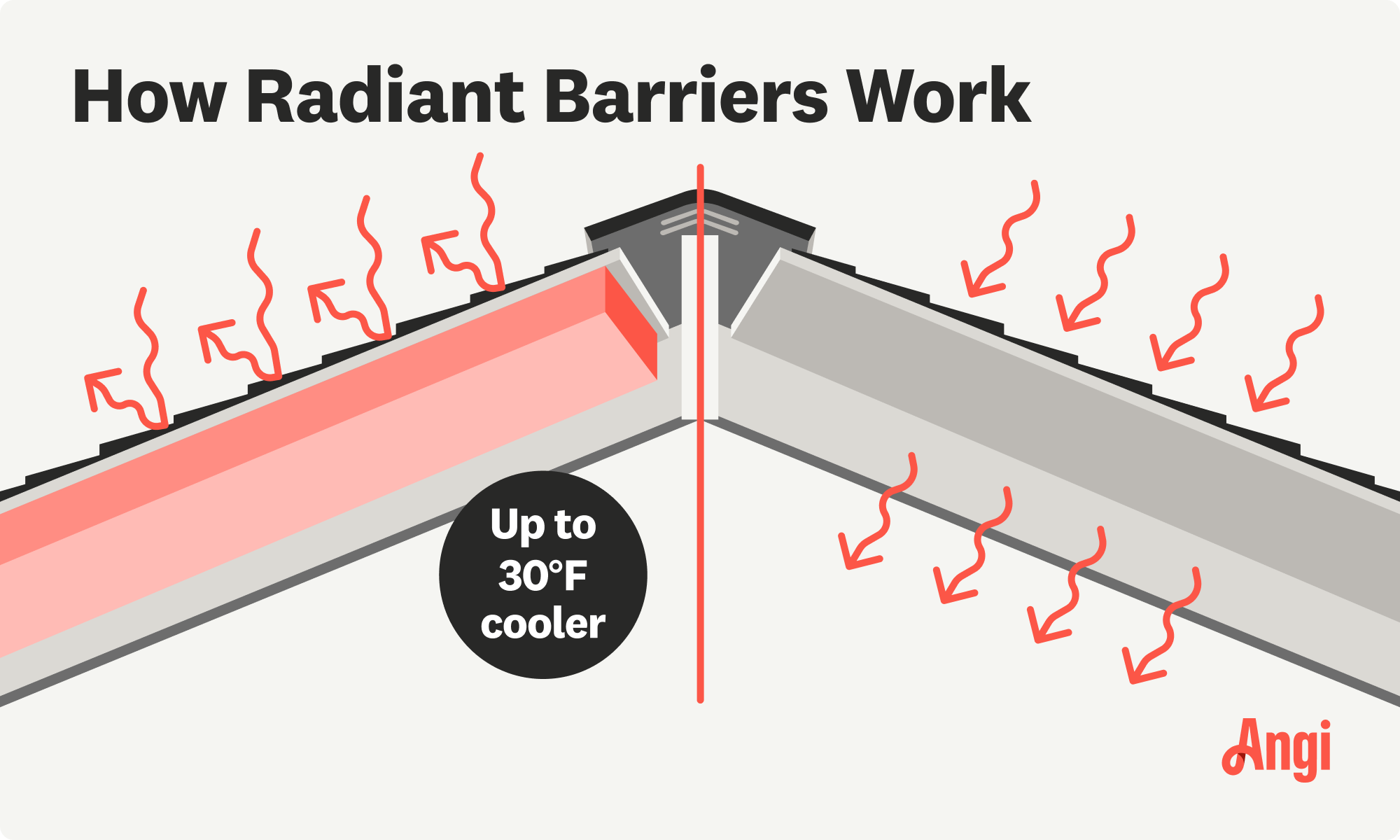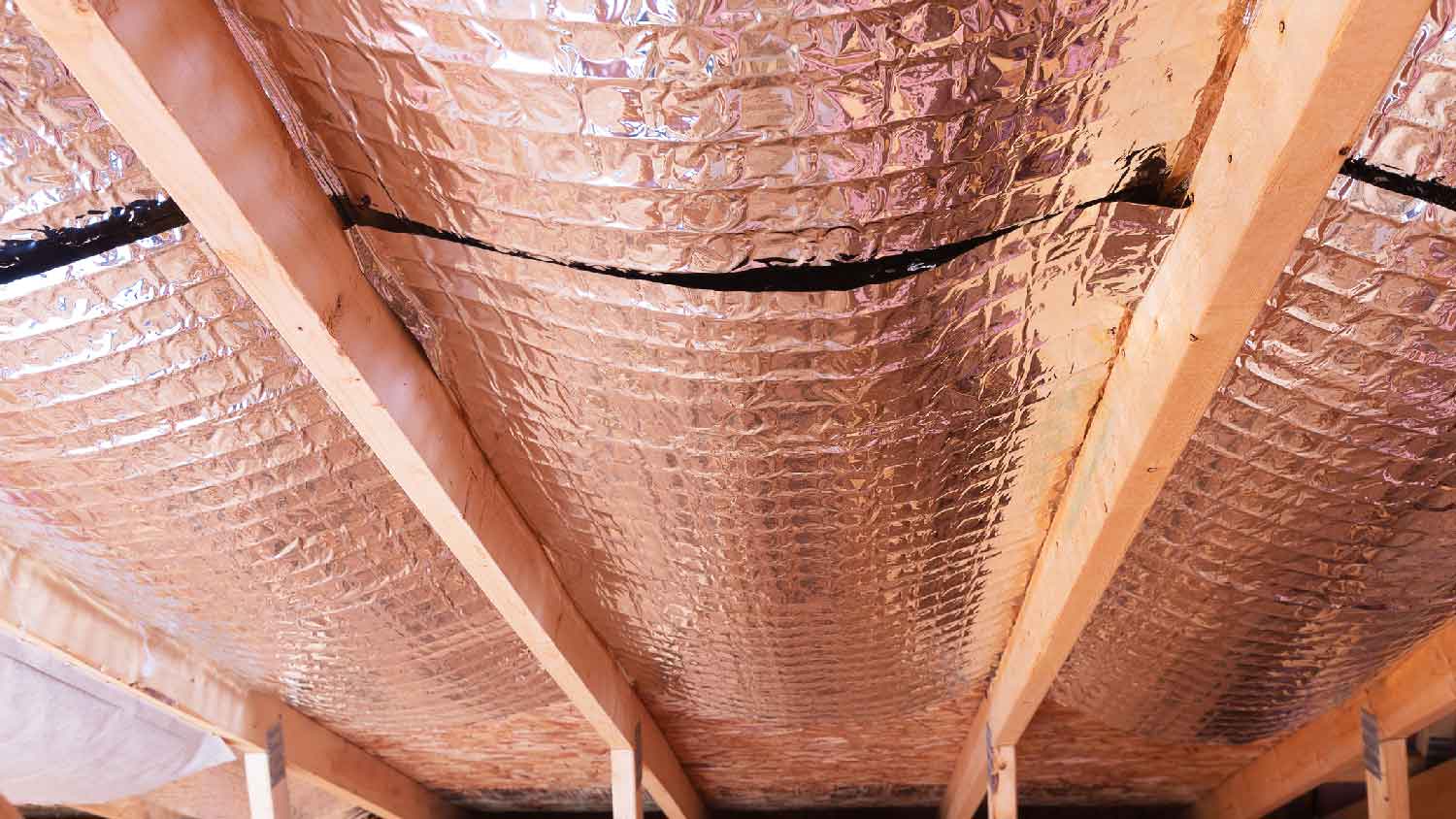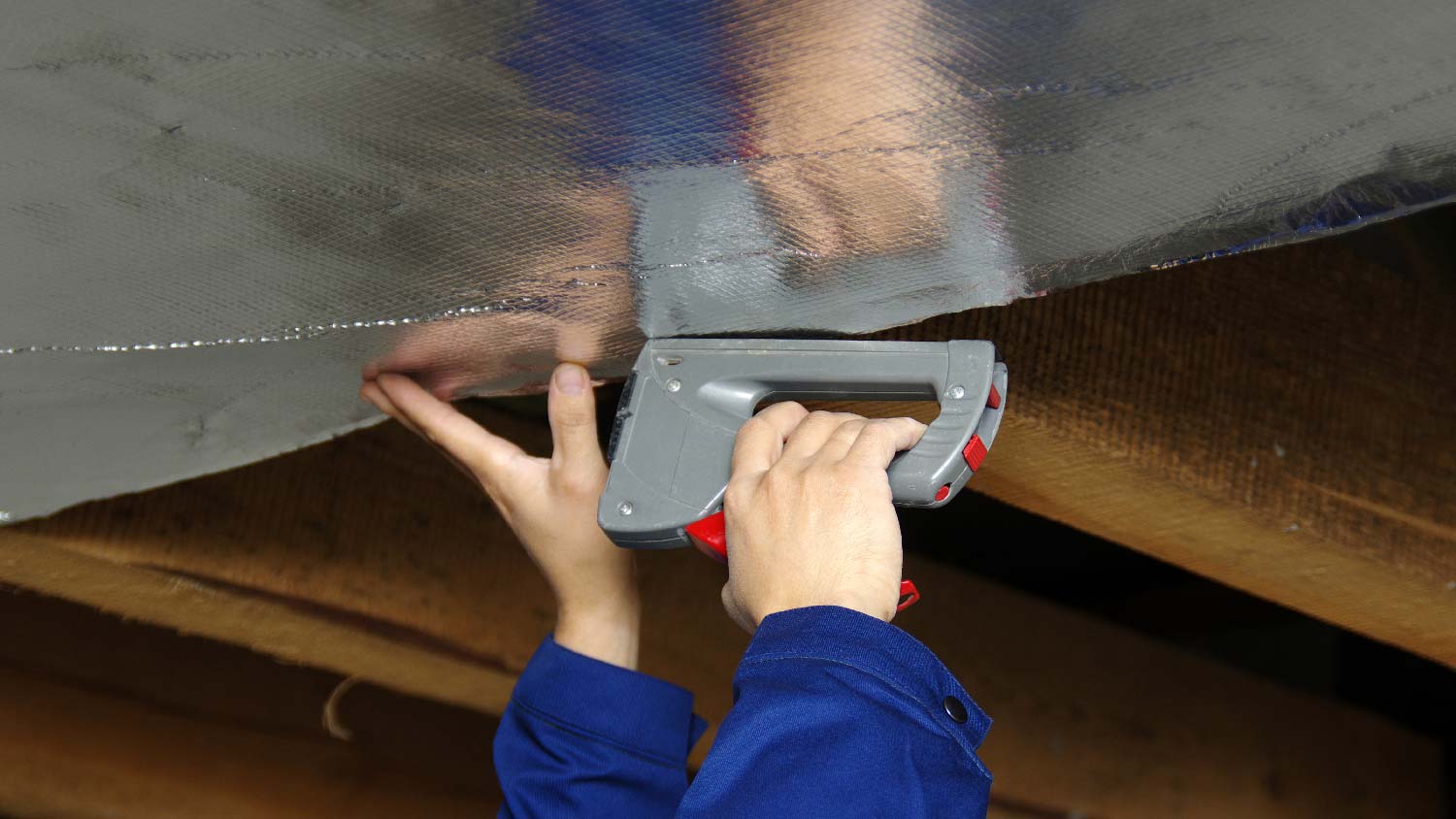
Insulating your attic can massively improve your home’s efficiency and reduce electric bills. Use this guide to find out what attic insulation will cost you.
Installing a radiant barrier costs $1,700 on average, but often ranges between $710 and $2,840 depending on whether your pro uses a foil or spray on type.


When planning to install a radiant barrier, budget between $710 and $2,840, with the average homeowner spending around $1,700 to have a radiant barrier installed. Costs vary depending on which type—foil or spray-on—you choose and the size of your attic space.

A radiant barrier is an effective method of reducing heat build-up in your attic, thus keeping your cooling costs down in the summer months. This barrier—installed in the attic as either a one- or two-side aluminum foil or a spray-on coating—reflects radiant heat, instead of absorbing it.
Installing a radiant barrier is a great way to reduce your energy bills during the hotter part of the year, and it’s not too expensive. Just how much you spend to install a radiant barrier depends on a few factors.

You can choose from two main types of radiant barriers: foil and spray coatings. Foil radiant barriers tend to be cheaper (though the two-sided foil is more costly) and are easier to install on your own.
On average, one-sided radiant barrier foil insulation costs from $0.10 to $0.25 per square foot, though costs for high-quality material can go as high as $0.50 per square foot. Two-sided radiant barrier foil reflects heat both ways, which makes this type more efficient; expect to spend from $0.50 to $0.90 per square foot, for materials alone.
Spray coatings are slightly less effective than foil barriers, and they can be more challenging and dangerous to install (because of the volatile organic compounds). However, radiant barrier spray coating is easier to apply in hard-to-reach areas. Spray coatings are generally sold in 5-gallon buckets; when applied properly, you’ll spend from $0.65 to $1 per square foot.
| Radiant Barrier Type | Cost Per Square Foot |
|---|---|
| One-sided foil radiant barrier | $0.10 – $0.50 |
| Two-sided foil radiant barrier | $0.50 – $0.90 |
| Spray-on radiant barrier | $0.65 - $1.00 |
If you’re comfortable with DIY work around the house, you may be able to save money by installing a radiant barrier yourself. However, you’ll need to purchase the supplies and, potentially, tools you don’t already have around the house. Because the work can be tough (and has to be performed in a hot, sometimes tight space)—and because precision is key during the installation—we highly recommend hiring a professional.
Get quotes from multiple attic insulation contractors near you and ask their pricing per square foot. On average, contractors charge between $0.60 and $1 per square foot to install both foil and spray-on radiant barriers. That comes out to roughly $30 to $80 per hour.
It’s hard to think about the total project costs for installing radiant barriers when you see the price per square foot. Instead, it’s more helpful to think in terms of project cost for the entire space.
The table below shows how costs might vary depending on the size of the attic space in which you’re installing the barrier.
| Square Footage | Total Installation Cost |
|---|---|
| 500 | $350 – $1,000 |
| 1,000 | $700 – $2,000 |
| 1,500 | $1,050 – $3,000 |
| 2,000 | $1,400 – $4,000 |
Roughly half the project cost of a radiant barrier comes from labor, so in theory, you can save money by doing it yourself. However, the installation work is challenging. And if you go the spray-on route, it can also be dangerous. To get the most efficiency out of your radiant barrier, we recommend hiring a local attic insulation company.
Read reviews online, ask friends and family for referrals, and get quotes from at least three qualified companies before moving forward.
Radiant barriers are ideal for reflecting heat, but to truly minimize your energy consumption, the barrier should be combined with attic insulation. If your home does not already have attic insulation, you’ll want to consider both at the same time. On average, attic insulation costs $2,500.
How much you spend on insulation depends on the type of insulation you choose:
Blown-in insulation costs between $0.50 and $2.30 per square foot.
Spray-foam insulation costs between $0.44 and $3.00 per board foot.
Fiberglass insulation costs between $0.30 and $1.50 per square foot.
Another cost consideration with radiant barrier installation is attic ventilation. Radiant barriers work best with a well-ventilated attic, which may require additional investment. For instance, installing an attic fan costs $625 on average.
According to Angi data, 11% of homeowners who install blown-in insulation also opt to install energy-saving radiant barrier protection. Other common add-on services include removing old insulation, installing sound proofing, and insulating hot water pipes.

Installing a radiant barrier pays off in the long run. The Department of Energy reports that radiant barriers have been shown to reduce cooling costs by 5% to 10% for homeowners in warmer, sunny climates.
The average electric bill across the U.S. is $137 a month, according to the U.S. Energy Information Administration. A 5% to 10% reduction is $6.85 to $13.70 a month in savings—or $82.20 to $164.40 a year.
But if you’re thinking about installing a radiant barrier, you likely live in a hotter climate and thus have a higher-than-average monthly electric bill, especially during the warm months. Floridians, for instance, spend an average of $272 a month on electricity, per Energy Sage. A 5% to 10% reduction due to a radiant barrier installation would mean $13.60 to $27.20 a month in savings—or $163.20 to $326.40 a year.
In the long run, installing an attic radiant barrier could be well worth the cost.
Home is the most important place on earth, which is why Angi has helped more than 150 million homeowners transform their houses into homes they adore. To help homeowners with their next project, Angi provides readers with the most accurate cost data and upholds strict editorial standards. We extensively research project costs to develop the pricing data you see, so you can make the best decisions for you and your home. We rely on reputable sources, including the U.S. Bureau of Labor Statistics, academic journals, market studies, and interviews with industry experts—all to ensure our prices reflect real-world projects.
Want to help us improve our cost data? Send us a recent project quote to [email protected]. Quotes and personal information will not be shared publicly.
From average costs to expert advice, get all the answers you need to get your job done.

Insulating your attic can massively improve your home’s efficiency and reduce electric bills. Use this guide to find out what attic insulation will cost you.

Discover roof insulation costs, including average prices, key cost factors, and expert tips to help you budget and save on your next project.

The cost to insulate a basement varies based on materials, size, and other factors, as well as how much of the work you wish to perform yourself.

If you need to add insulation to your home, you’re likely wondering, who installs insulation. Learn why it’s best to hire an insulation pro for this project.

Our guide helps you select the right type of garage insulation to regulate temperature, sounds, and smells in your garage space.

Are you wondering how to install foam board insulation? This step-by-step guide can help you decide whether you can tackle the project yourself or if you're better off calling a pro.